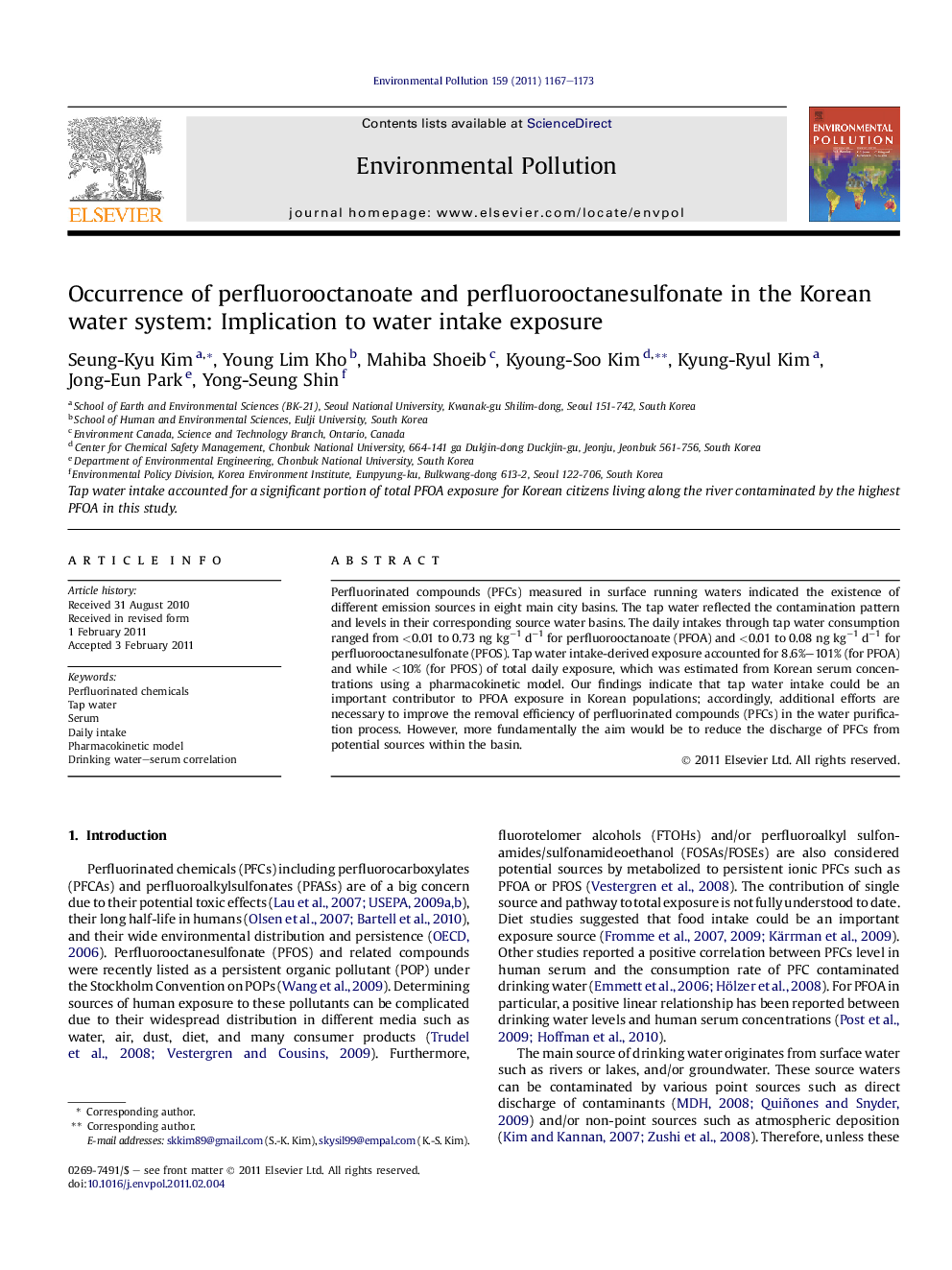| Article ID | Journal | Published Year | Pages | File Type |
|---|---|---|---|---|
| 4425445 | Environmental Pollution | 2011 | 7 Pages |
Perfluorinated compounds (PFCs) measured in surface running waters indicated the existence of different emission sources in eight main city basins. The tap water reflected the contamination pattern and levels in their corresponding source water basins. The daily intakes through tap water consumption ranged from <0.01 to 0.73 ng kg−1 d−1 for perfluorooctanoate (PFOA) and <0.01 to 0.08 ng kg−1 d−1 for perfluorooctanesulfonate (PFOS). Tap water intake-derived exposure accounted for 8.6%–101% (for PFOA) and while <10% (for PFOS) of total daily exposure, which was estimated from Korean serum concentrations using a pharmacokinetic model. Our findings indicate that tap water intake could be an important contributor to PFOA exposure in Korean populations; accordingly, additional efforts are necessary to improve the removal efficiency of perfluorinated compounds (PFCs) in the water purification process. However, more fundamentally the aim would be to reduce the discharge of PFCs from potential sources within the basin.
► Tap waters reflected the source-water contamination caused by local emission source. ► Tap water intake-derived exposure was significant for PFOA while not for PFOS. ► For PFOA, human exposure was strongly associated with ambient water contamination. ► Efforts are necessary to improve PFOA removal efficiency and reduce its discharge.
